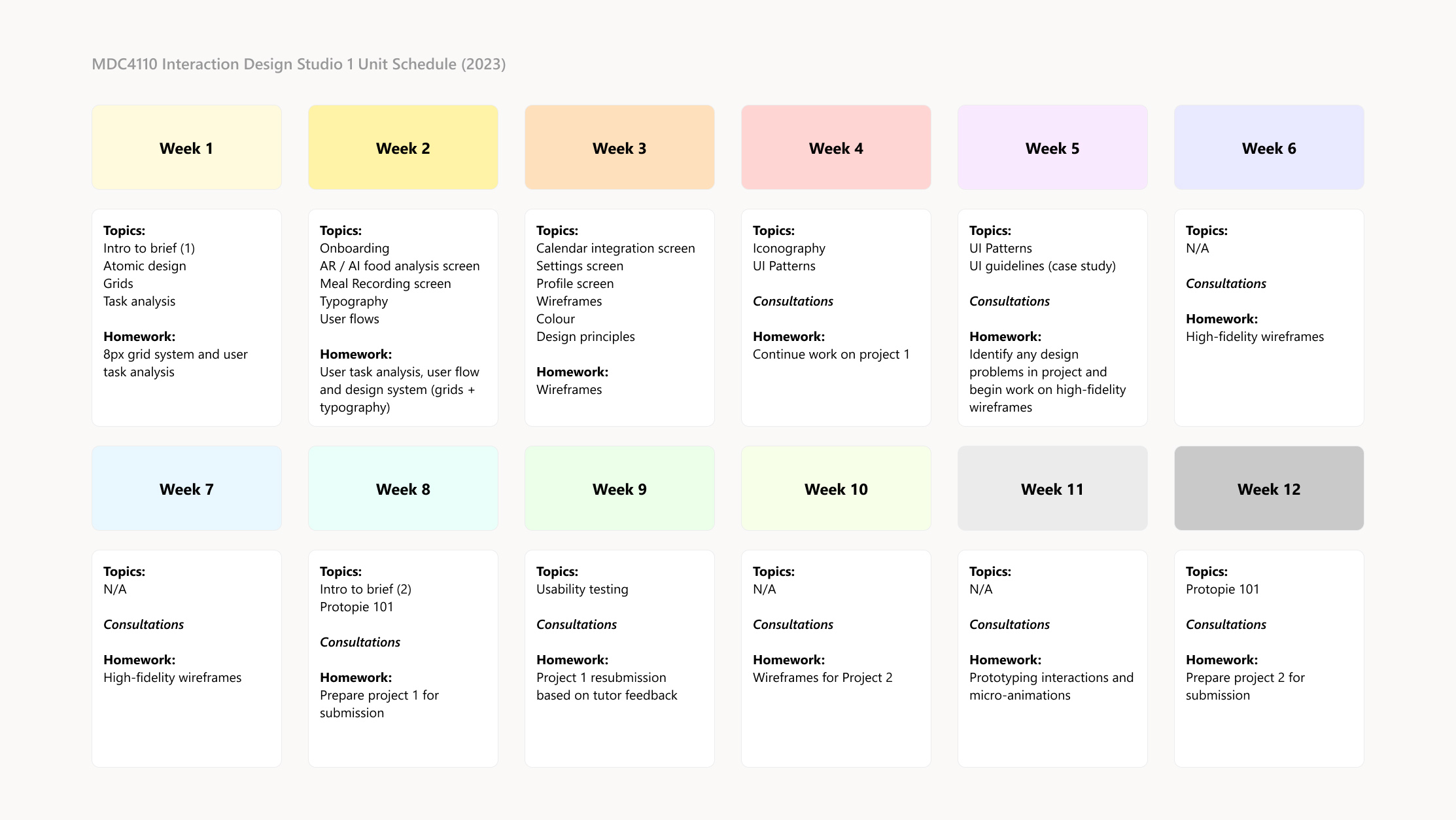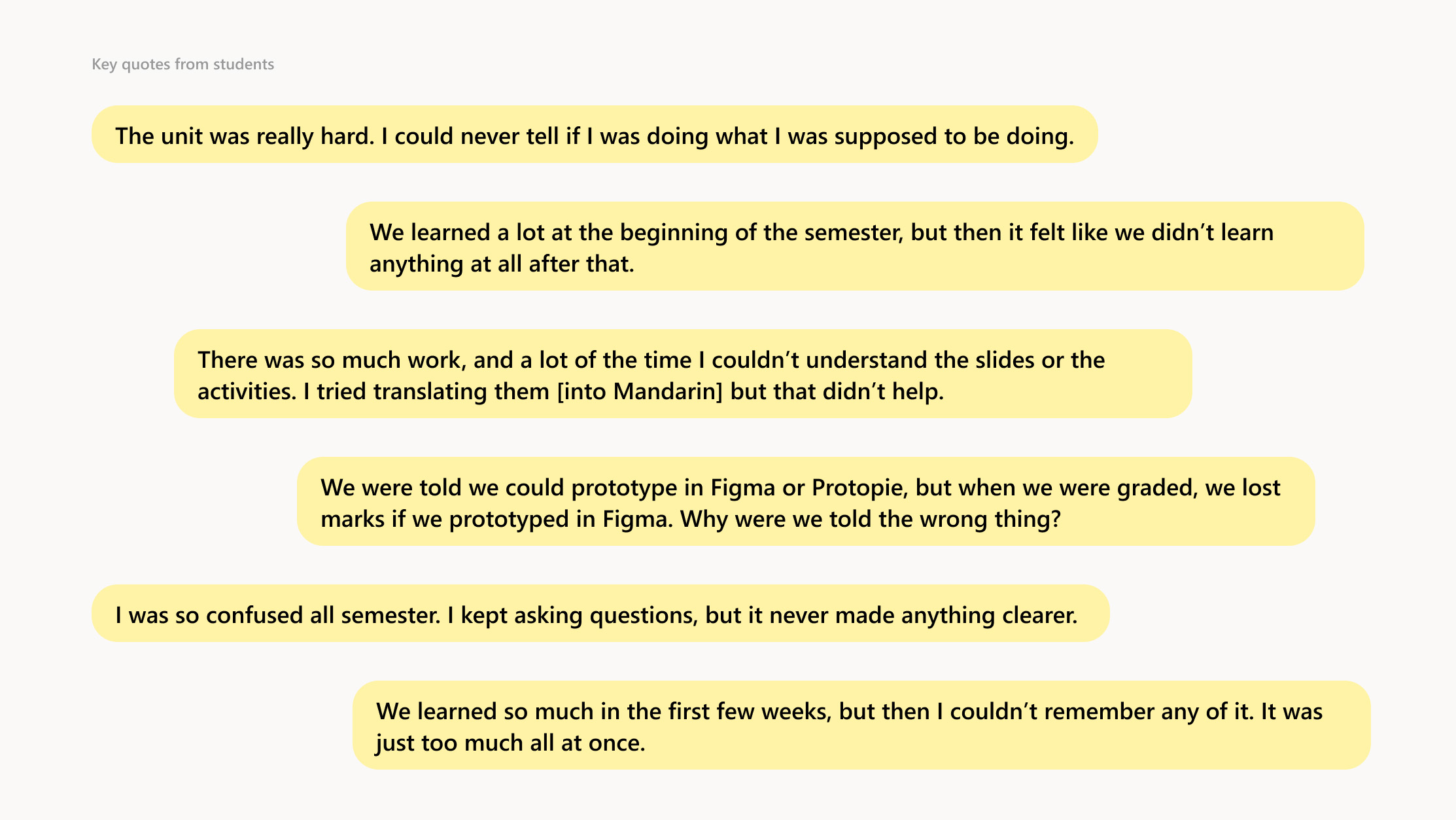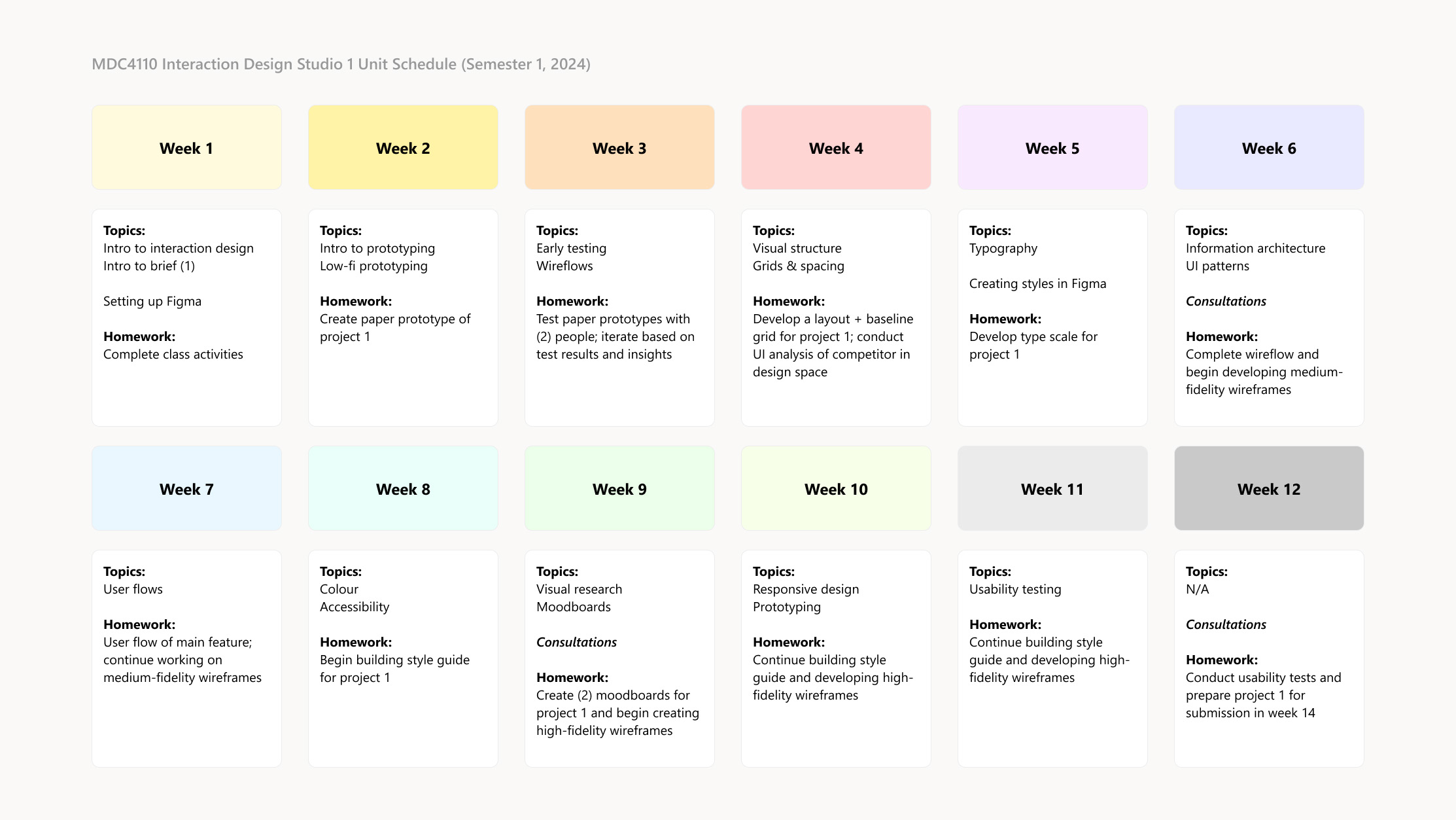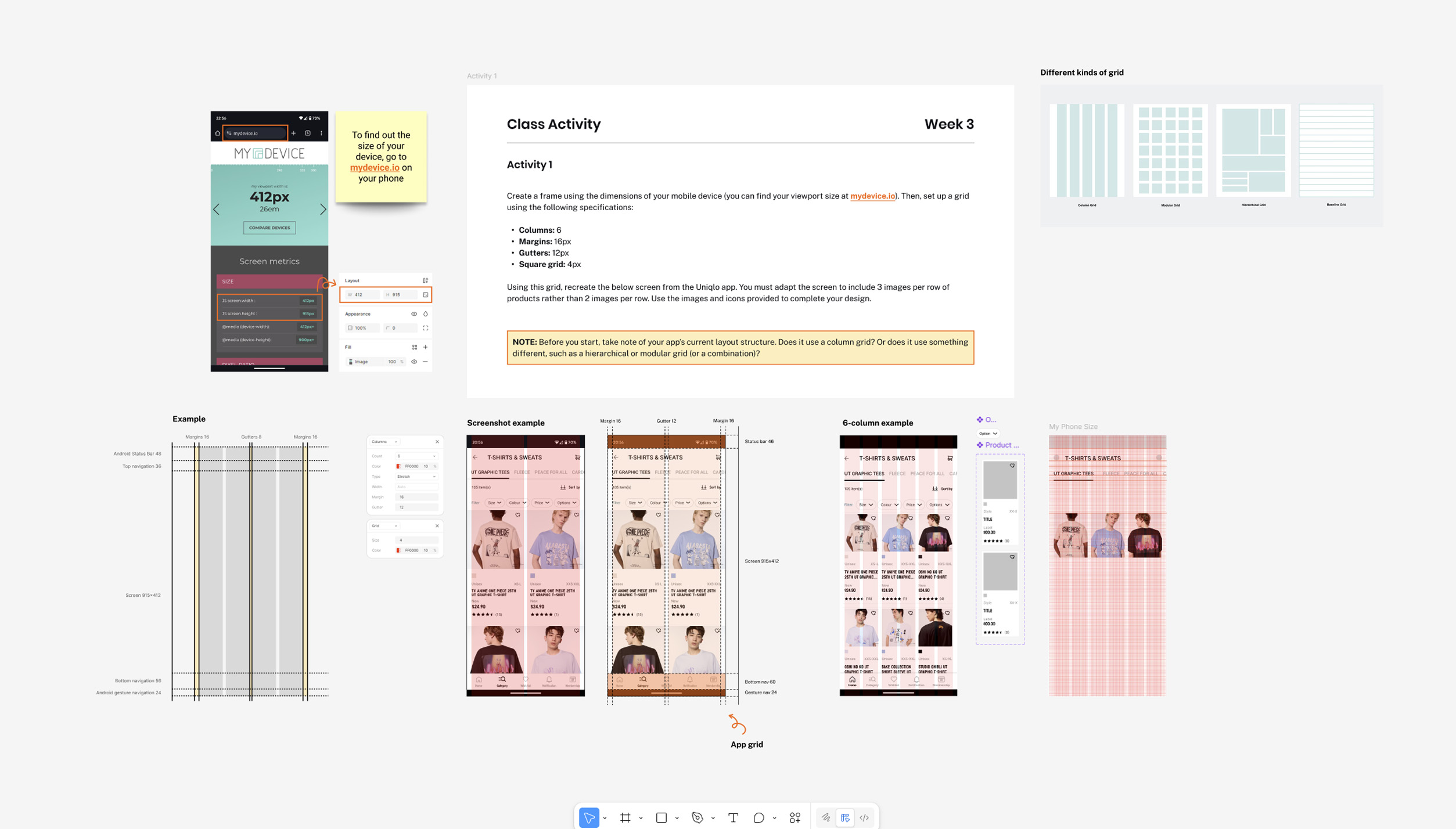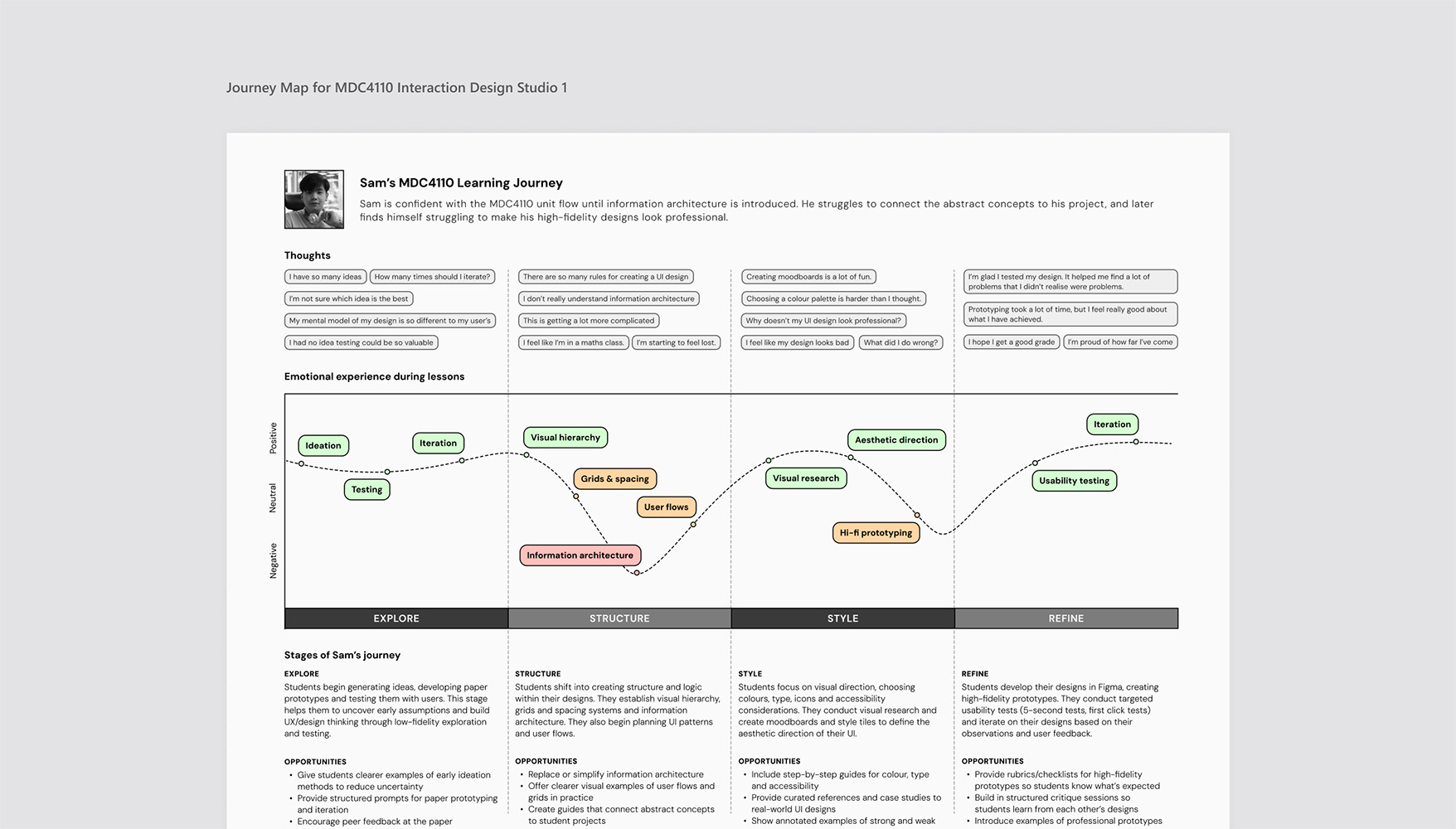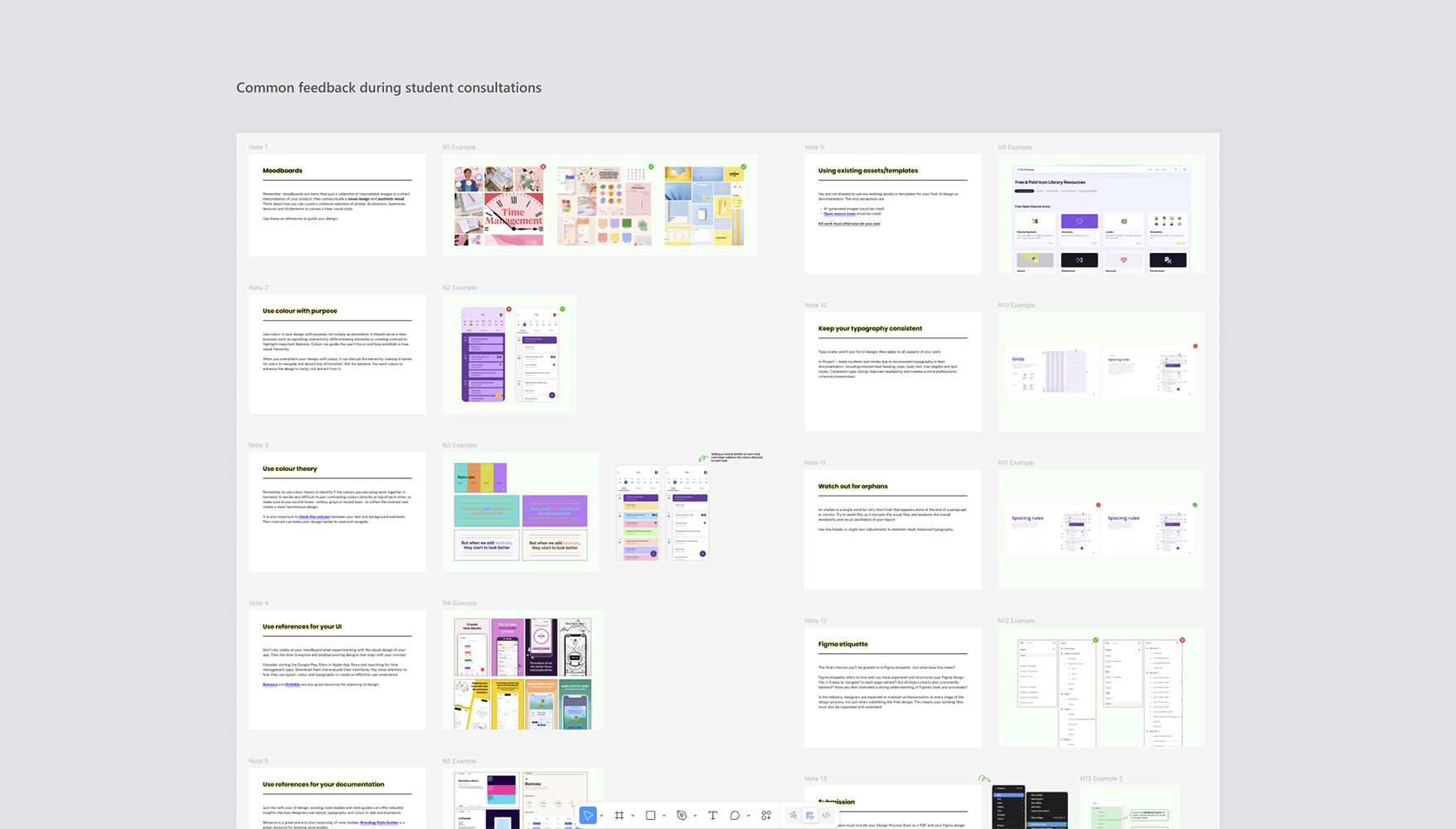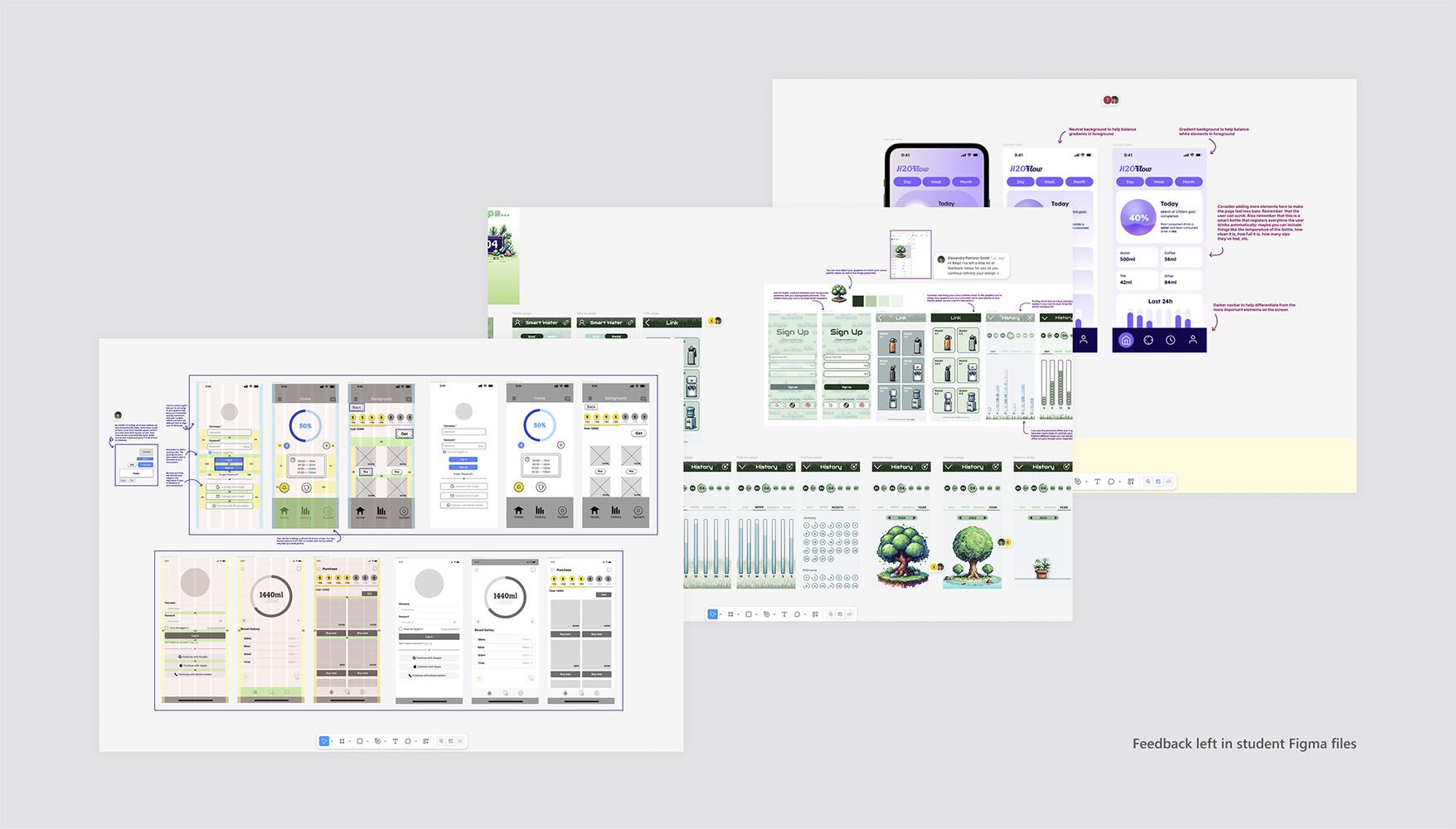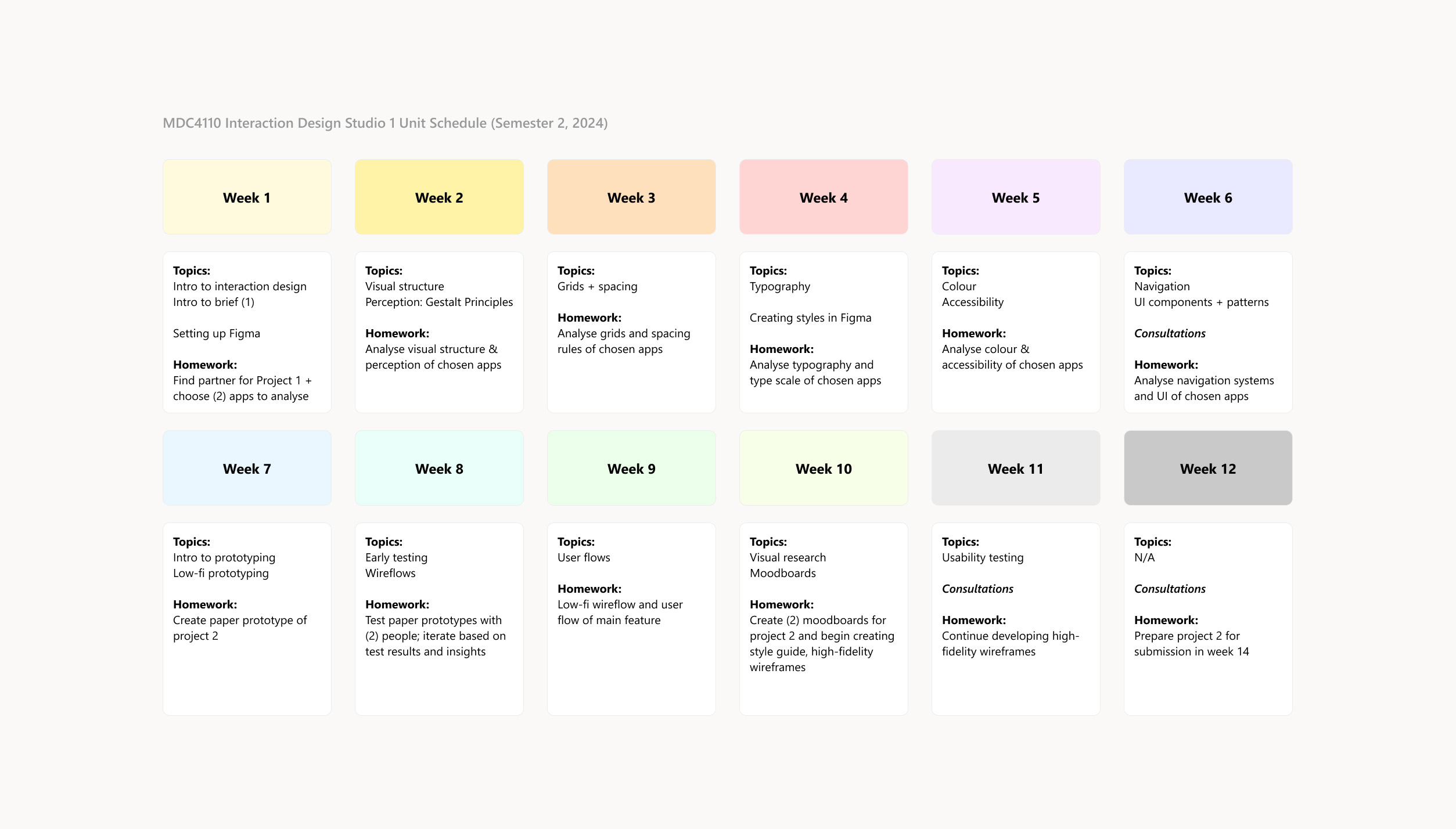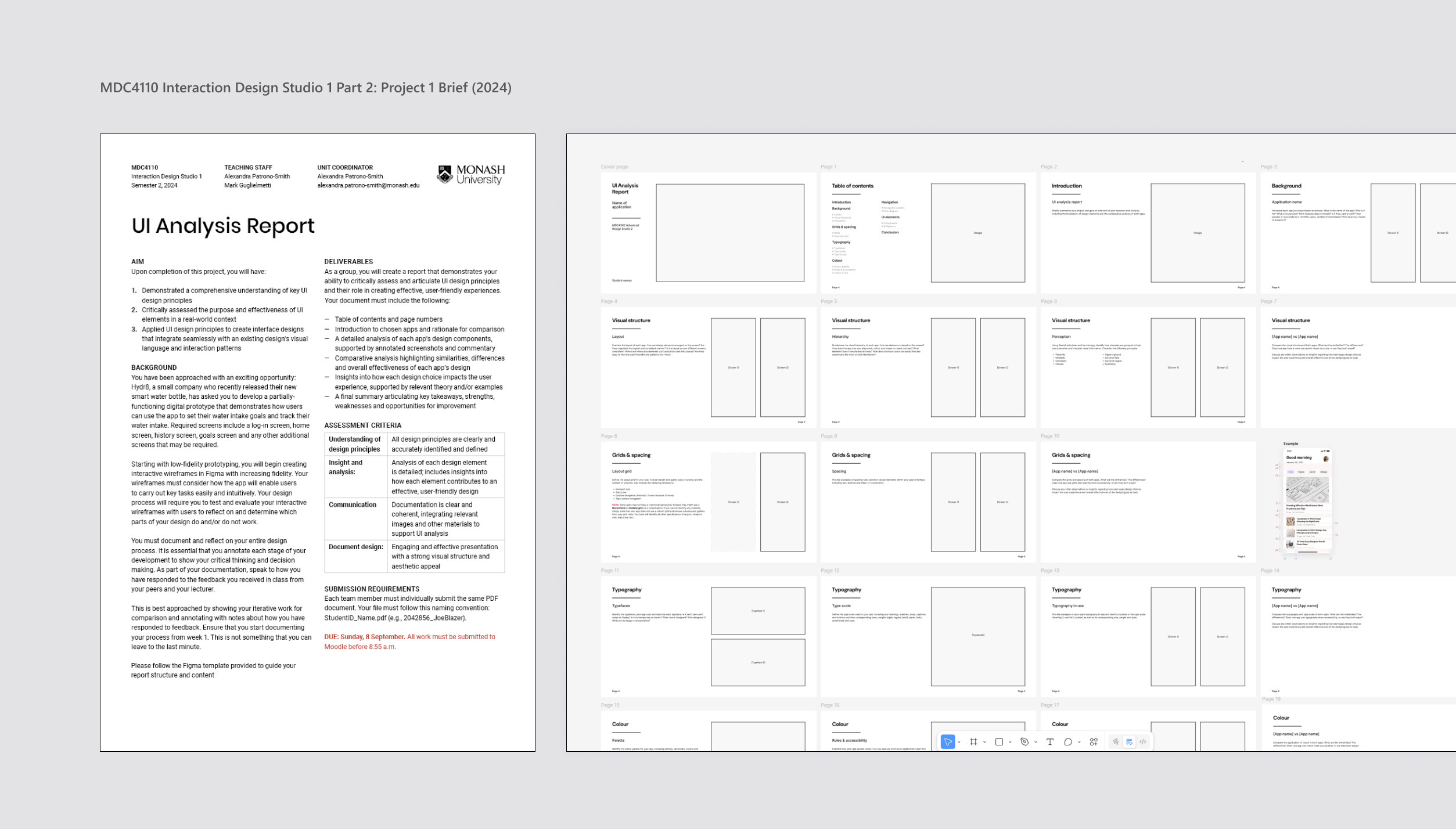MDC4110: A Studio Rebuilt
CONTENT DESIGN · CURRICULUM DESIGN
INTRODUCTION
MDC4110 was meant to introduce students to interaction design—but the unit wasn’t designed with their experience in mind. It was unclear, overloaded and needlessly complex. So I rebuilt it from the ground up, reworking the structure, flow and content to better support clarity, engagement and outcomes.
THE UNIT
Teaching design is a design problem
MDC4110 was where students first encountered interaction design—but instead of setting them up for success, it left them feeling lost and confused. When I took over the unit, I treated it the way I’d treat any user journey: I listened, identified what wasn't working and redesigned the experience to be clearer, more supportive and more engaging.
Snapshots of the MDC4110 week 1 lecture slides (2023)
THE CHALLENGE
Plenty of content, no clear structure
In its previous iteration, MDC4110 front-loaded complex topics without a coherent learning progression. Activities focused heavily on software tutorials rather than applied design, and later weeks felt empty, offering few opportunities for students to build on what they’d learned or receive actionable feedback.
Screenshot of original MDC4110 unit schedule (2023)
WHY IT NEEDED TO CHANGE
The unit wasn’t working—and students made that clear
MDC4110 received negative evaluations from students who felt overwhelmed and unsupported. Even after the redesign, many students continued to reflect on how challenging the earlier version had been, pointing to unclear expectations, limited guidance and too much content introduced too early in the semester.
REFRAMING THE UNIT
Building a clearer and more supportive learning journey
When I took over as co-ordinator the following semester, I revised every aspect of the unit: lecture content, slides, learning activities and assessment briefs. I restructured each week to cover fewer concepts with more detail and clarity, aligning activities directly with core topics to support applied learning.
Screenshot of restructured MDC4110 unit schedule (Semester 1, 2024)
WHAT I CHANGED
Restructured weekly lectures, focusing on a logical sequence of topics
Redesigned class activities to apply UI/UX principles, not just Figma skills
Developed clearer briefs and expectations aligned with studio progression
Integrated checklists, templates and visual examples for clarity and accessibility
KEEPING IT SIMPLE
Previously, students were asked to design an AI/AR-enabled food diary app and marketing website with complex requirements. This confused students and placed too much emphasis on emerging tech. I replaced these briefs with a single, semester-long project split into two parts: Design Process and High-Fidelity Design & Prototype. This gave students a clearer progression, starting with low-fidelity prototyping, testing and core UI principles before moving into wireframes, visual design and an interactive prototype.
A simpler brief for deeper learning
Screenshot of the original MDC4110 Part 2: Project 1 brief (2023) and the redesigned brief (2024)
WHAT WORKED AND WHAT DIDN'T
Research and student feedback shaped the next iteration
After delivering the revised unit, I surveyed students, conducted informal interviews and reviewed project outcomes. Students responded positively to the new structure but still struggled with high-fidelity design. Many avoided using visual points of reference, often trying to guess UI patterns rather than draw inspiration from existing designs. As a topic, information architecture also proved too complex for students new to design.
SECOND ITERATION
Anchoring design in analysis and practice
In the following semester, I replaced the Smart Water App project with two new briefs: a UI Analysis Report, where students were required to analyse and compare two existing apps (including grids, spacing, colour, typography and interaction patterns), and a Design Process Report, where students created a UI solution using user research observations and insights from their UX Research Studio.
An important change was bringing together Part 1 (UX Research Studio) and Part 2 (UI & Prototyping Studio). Previously taught in isolation, the separation of these sections often left students unsure of how to apply research to design. By integrating the two, students could carry their insights forward into their UI projects, resulting in stronger outcomes and a clearer understanding of how research informs design.
IMPACT
Designing a better unit meant designing a better journey
Redesigning MDC4110 wasn’t just about updating slides and activities; it was about creating a structure that made sense for students. I slowed things down, introduced ideas in a more logical sequence and made sure each task had a clear purpose. As a result, students were more engaged, more confident and produced stronger, more considered work.
This experience reinforced a core belief: good design teaching isn’t just about delivering content—it’s about creating meaningful connections between ideas, practice and people.
This experience reinforced a core belief: good design teaching isn’t just about delivering content—it’s about creating meaningful connections between ideas, practice and people.

